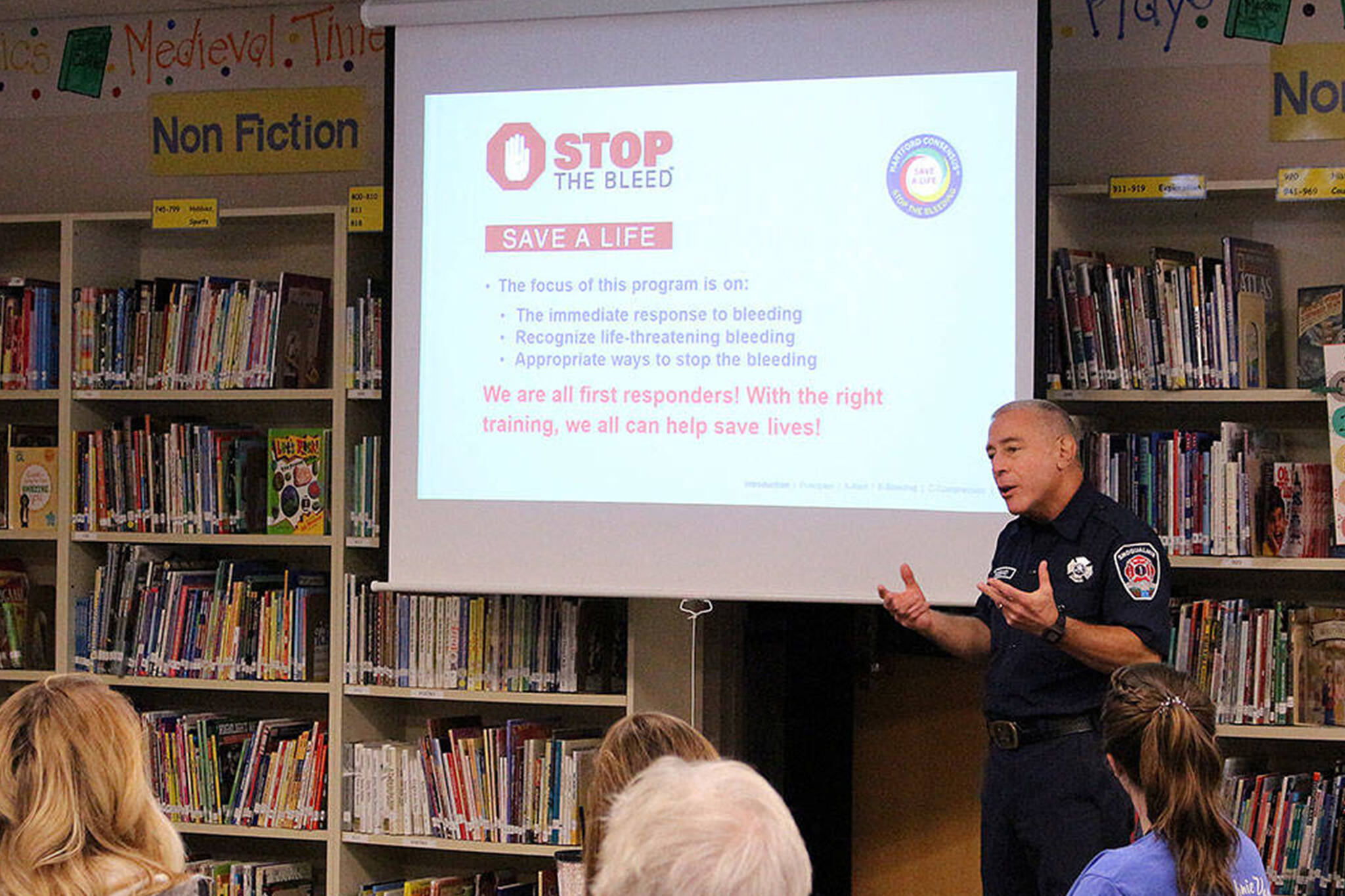As a Snoqualmie firefighter and Swedish hospital emergency room technician, Robert Angrisano has been no stranger to the region’s growing opioid crisis.
But when Angrisano started looking into the situation, he quickly determined it had often gone unnoticed by the public.
“The deeper I dug into it, it became really clear the public wasn’t aware of it,” he said. “There was no education on how to reverse an opioid overdose.”
The sudden realization drove Angrisano to found an opioid education and overdose training class through the Snoqualmie Fire Department. The program is one of the first of its kind in the state, Angrisano said, adding that Snoqualmie is the only fire department in King County to offer such a course.
The groundbreaking one-hour training teaches residents the background of the opioid crisis and how to identify an overdose or poisoning. Each student also learns how to administer naloxone, a life-saving drug sold under the brand name Narcan that can reverse the effects of an overdose.
Angrisano first taught the course at the fire department last July. He has since introduced the material to students and staff at Mount Si High School, incorporating it with existing CPR education. He has also delivered the material in Leavenworth, Wenatchee and to staff at Bellevue College.
Another round of the class, open to the public, is being taught for free at the Snoqualmie Fire Department on Dec. 9. It has been combined with the department’s “Stop the Bleed” education program.
Locally and across the county, opioid overdoses and deaths have increased dramatically in recent years, according to the Addictions, Drug and Alcohol Institute at the University of Washington. Opioids include legal painkillers, like oxycodone, as well as illicit drugs like heroin.
According to the Council on Foreign Relations, a nonpartisan think-tank, the opioid crisis started with the over-prescribing of legal pain medication, but has intensified due to the influx of cheap heroin and synthetic opioids, including fentanyl — which is about 50 times more potent than heroin — being supplied by drug cartels.
During a presentation in Mercer Island last month called “One Pill Can Kill,” David Reames, a Drug Enforcement Agency special agent, said fentanyl is cheap, profitable and addictive. On its awareness website, the DEA calls fentanyl the single deadliest drug the U.S. has ever encountered.
In King County, fentanyl was involved in 714 overdose deaths in 2022, according to the King County Fatal Overdose Dashboard. That’s up from 109 deaths in 2019.
So far this year, fentanyl has been involved in 906 deaths, as of Nov. 6, according to the dashboard.
Reames said many who end up taking fentanyl believe they are taking another substance. The drug is often disguised as Oxycodone, Xanax, Adderall, or mixed in with a powder substance such as cocaine or heroin. To the naked eye, it can be difficult to distinguish which is fentanyl.
Exactly how severe fentanyl usage is in East King County and the Snoqualmie Valley is unclear. There is little available data to quantify the situation. Geographic data from King County Fatal Overdose Dashboard outside of Seattle and South King County has mostly been suppressed to protect confidentiality.
Angrisano said based on his experience as a first-responder and hospital employee, he doesn’t think the Valley is unique, noting the crisis has impacted people of various income levels and ages, including youth.
“I’ve learned not to assume anything,” he said.
There has been at least one reported instance of a Mount Si High School student dying from a fentanyl-related overdose. The student took cocaine laced with fentanyl, according to a statement from district officials in 2020.
A spokesperson for the Snoqualmie Valley School District did not say whether there had been additional reports of fentanyl use among students, but noted the district had taken several precautions to ensure student safety.
Justin May, SVSD’s associate director of student services, said the district’s health services team underwent opioid overdose reversal training with the Snoqualmie Fire Department in August. Seventeen staff members took the course, and plan to teach other staff members, he said.
The district has about 40 naloxone kits across the district, including in every health room and alongside all automatic defibrillator units. Naloxone kits have been strategically placed so they are never more than a 90-second walk from any given location on school campuses, May said.
“We continue to focus our efforts on creating and maintaining a healthy and safe learning environment for our students,” May said. “By investing in prevention, training, and resources, our school district aims to be a beacon of safety and preparedness in our community.”
Angrisano compares carrying naloxone to learning CPR. It’s legal to own, he said, and can potentially help save a life if administered in time.
“Everyone should carry it with them,” he said. “It’s really straight forward.”
Check it out
To register for Stop the Bleed + Opioid Overdose Education Class, snoqualmiewa.gov/FormCenter/Fire-Department-9



